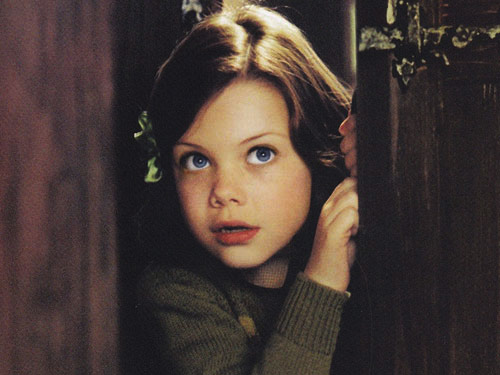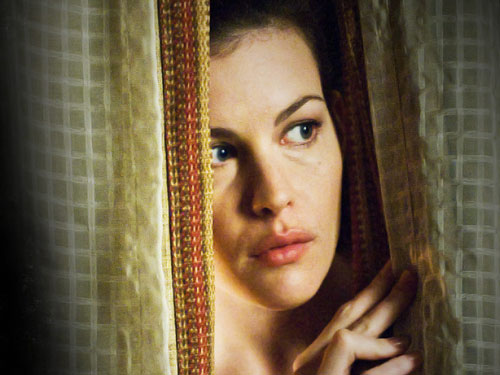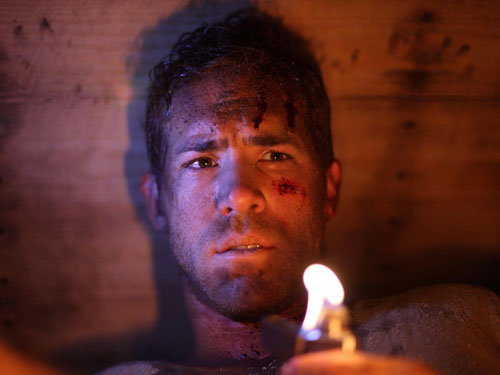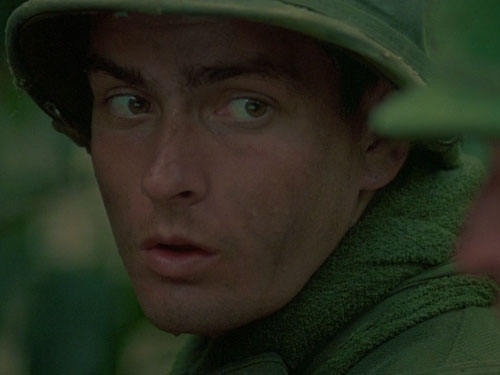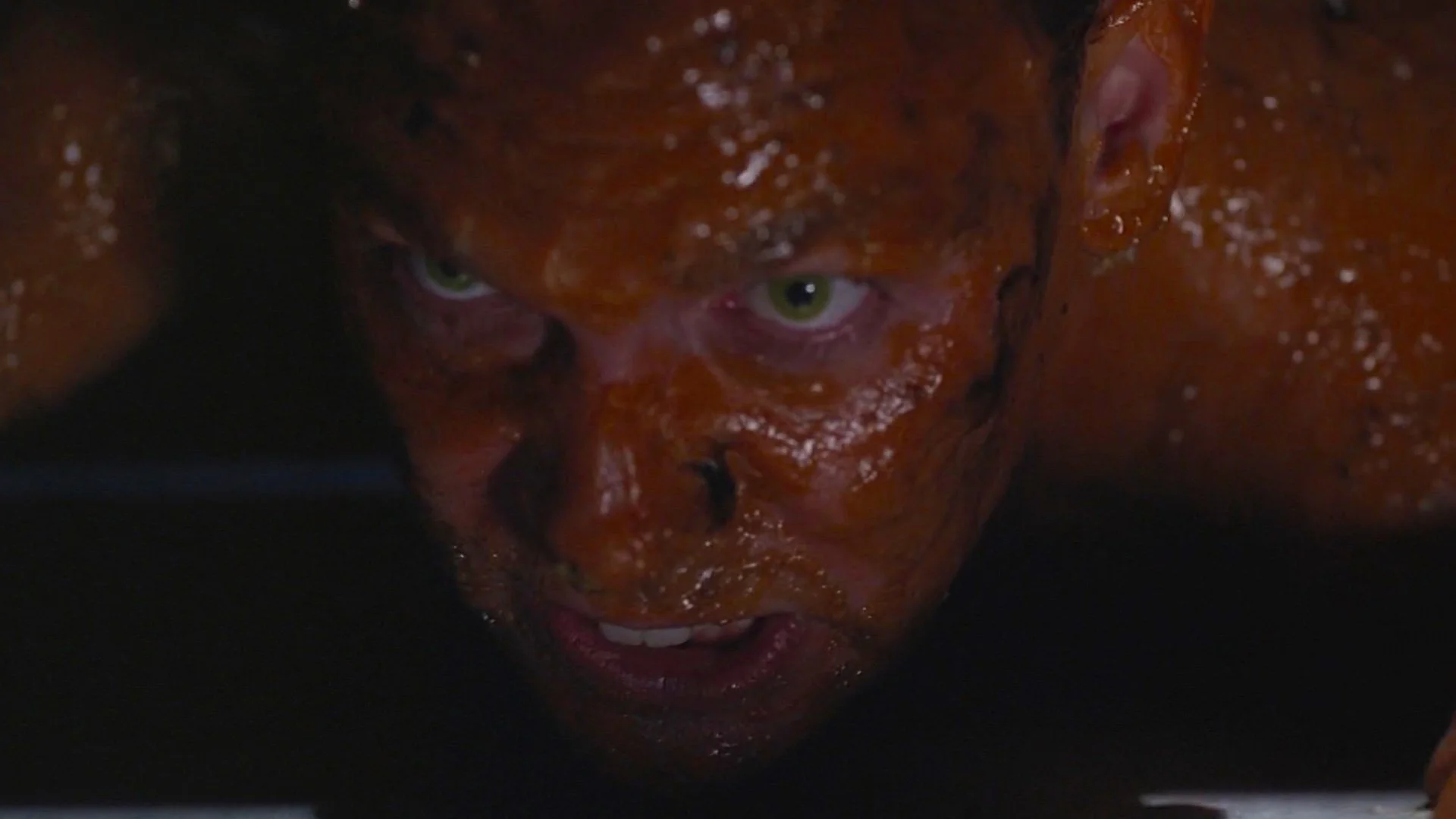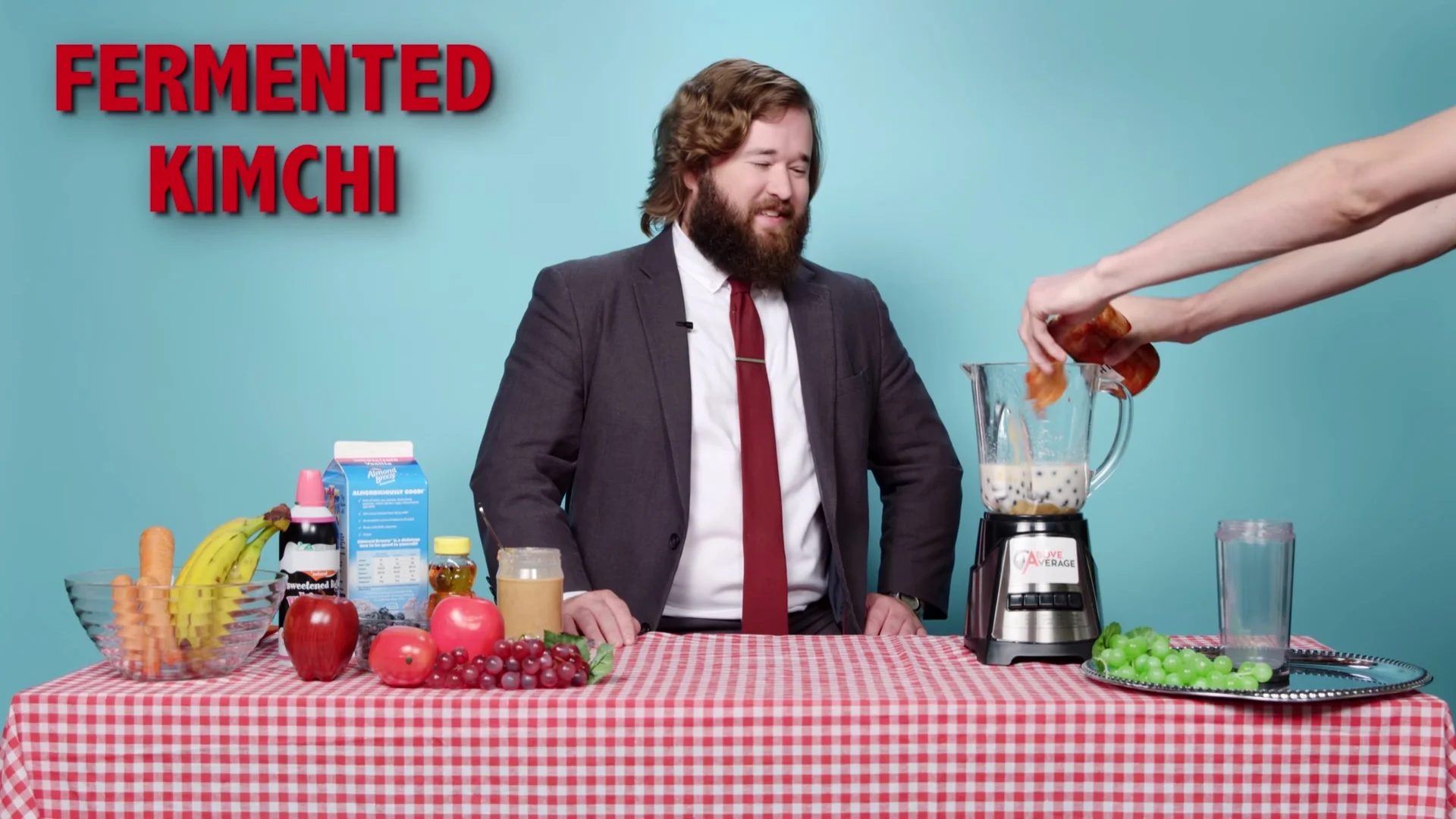Movies That Were Shot in Chronological Order
The first thing I should point out, is that movies are almost NEVER shot in chronological order, or in other words, in sequence of the events as they would unfold or "script order." This is pretty common knowledge, but don't beat yourself up if you didn't know already. For Dolly Parton's first motion picture (Nine to Five), she memorized the entire script, including the other characters' lines. Apparently, after letting on that she thought movies were filmed in chronological order, co-star Lily Tomlin burst out laughing.
Movies are shot out of sequence for a number of reasons. Among these reasons are; renting out locations or studio space, lighting, weather conditions, and most importantly, the availability of an actor. All of these basically boil down to time and money.
So with budget and time constraints almost always working against shooting a film in chronological order, what would drive a filmmaker to pursue such a course? We'll explore the various reasons for each film, but in gathering this list, I noticed a lot of interesting themes and storytelling devices that you should look out for that seemingly all of the movies shot in chronological order share. When an actor must undergo a physical transformation, or in cases where there are child actors involved, shooting in script order enhances an actor's look and performance. The majority of the films on this list take place in one day or night, and usually in one central location. Even as you look at the collage of screenshots above, you've probably noticed that nearly all of the characters are trapped in a world, stranded on a planet, held captive in a house or building, even down to being confined to a coffin or battling one's own mind.
I hope you have as much fun delving into these movies as I did compiling this list for you. Enjoy!
American Graffiti (1973)
After struggling to find commercial success with THX 1138, director George Lucas drew on his own experiences as a teenager in the 1960s era of cruising to make a film with broader appeal to general audiences. American Graffiti takes place within one night. In order to get the characters to look increasingly tired as the night went on, Lucas decided to film in chronological order. Unaware of the reason behind shooting in script order, Ron Howard initially felt that this was an insult towards his and the other actors' professionalism. Oddly enough, as a director, Howard would receive much of the same criticism for shooting A Beautiful Mind in sequence.
Additional Note: Apparently Lucas had quite the rowdy cast on his hands. Harrison Ford, Paul Le Mat, and Bo Hopkins would often get drunk between takes and have competitions to climb to the top of a local Holiday Inn sign. Ford was arrested in a bar fight and kicked out of his hotel, and Richard Dreyfuss gashed his forehead the day before a close up when Le Mat threw him into a swimming pool. On top of all that, one of the cast members set fire to Lucas' motel room.
The Texas Chainsaw Massacre (1974)
The low budget nature of The Texas Chainsaw Massacre only added to the creepy and off-putting grittiness of this highly influential horror classic, which the studio sheen of the 2003 remake failed to recapture. The small budget combined with the high-cost of equipment rentals forced the actors and crew to work up to 16 hours a day, 7 days a week, in 95 to 100 degree weather, for the entire month-long shoot! Since many of the actors' clothes were never washed, no matter how much blood got on them, it's not hard to see why they shot the film in script order.
Additional Note: In some cases it was cheaper for the filmmakers to use human skeletons and real blood. Real blood was used for the scene in which Leatherface feeds "Grandpa." And getting a human skeleton from India for the shot at the end of the film was apparently cheaper than buying a plastic one.
The Shining (1980)
With the originally scheduled 17-week-long shoot ballooning to about a year, it's hard to imagine that The Shining could have possibly been filmed in chronological order. Director Stanley Kubrick made so many daily changes to the script that Jack Nicholson began throwing away the copies that the production team would give him, and would learn his lines just minutes before filming. Shelley Duvall had an even rougher time. She had frequent argumentswith Kubrick over lines and acting techniques, and became so stressed over the role that her hair began falling out.
With his notorious obsession with getting the perfect take, how did Kubrick pull off shooting this film in the order of a script that was ever-changing? In order to achieve this, Kubrick rented out every soundstage at Britain's Elstree Studios, and had every set built, pre-lit, and ready to go... everyday for the nearly year-long shoot.
Additional Note: The set for the Overlook Hotel, including a full re-creation of the exterior of the hotel, was the largest ever built at the time.
E.T. (1982)
Written mostly during breaks on location while shooting Raiders of the Lost Ark by Harrison Ford's then girlfriend and future/former wife, Melissa Mathison, E.T.: The Extra Terrestrial was filmed chronologically in order to evoke real emotion from the extremely young cast. Aside from Elliot's mother, played by Dee Wallace, no adult faces are shown until the last half of the film. Steven Spielberg felt that shooting in sequence would help the child actors maintain the thread of the their characters' development and the story itself. This was particularly effective with E.T.'s departure at the end of the film, making all of the emotional responses genuine. Shooting this way, though, meant that Wallace had nothing to do during much of the production. She used the "free time" to learn how to meditate.
Additional Note: In order for the audience to establish an even deeper connection with Elliot and E.T., Spielberg shot most of the film from the eye level of a child.
The Breakfast Club (1985)
Written in two days and titled after the campus nickname for "detention" at the high school of his friend's son, John Hughes filmed The Breakfast Club completely in sequence after having the actors rehearse the movie several times, as if it were a play. The last shot of the film, of Bender (Judd Nelson) walking away, was the last thing shot on the last day. Since this was Nelson's first film, he thought all movies were shot sequentially.
Hughes' regulars, Anthony Michael Hall and Molly Ringwald, were both 17 during filming. Nelson has stated that Hall was in a rapid growth spurt during the course of the film, saying that he was two inches taller than Hall at auditions, half an inch taller during rehearsals, and by the end of the shoot, Hall was taller than him.
Additional Notes: Since The Breakfast Club was filmed back to back in the same high school as Hughes' follow up, Ferris Bueller's Day Off, some of the same posters can be seen on the walls in both films.
Even though Emilio Estevez, Judd Nelson, and Ally Sheedy all played high school students in this film, that same year all three would play college graduates in St. Elmo's Fire.
Nine 1/2 Weeks (1986)
In order to effectively capture Kim Basinger's emotional breakdown over time, director Adrian Lyne took the costly route of shooting the movie in script order. It paid off, because the emotional breakdown was more real than fiction, with Lyne using several manipulative tactics on the actress to elicit the performance. Basinger would later harshly criticize the director's methods, which included forbidding her to talk to co-star Mickey Rourke off set, giving Rourke notes between takes and not her, and when she was alone Lyne would tell her lies about Rourke to get her to dislike him.
Additional Note: In the film, Kim Basinger's character wears white or colorful clothing, but when she is with Mickey Rourke, she is put in black or grey.
Death and the Maiden (1994)
Taking advantage of the fact that most of the film takes place in one room, director Roman Polanski shot Death and the Maiden in strict chronological order to allow the atmosphere to ferment on and off screen, the only exception being the "sunrise" at the end of the film, which was actually shot at sunset. To help establish Sigourney Weaver's character, it would have seemed logical to include some flashback sequences, but Polanski rightly felt that it would conflict with the style of the picture.
A Beautiful Mind (2001)
Before ultimately winning four Oscars for A Beautiful Mind, including Best Picture and Best Director, Ron Howard received some criticism for shooting the film in sequence to allow Russell Crowe to have a more consistent and natural progression of behavior for his portrayal of John Nash. Along with the chronological shooting schedule, breakthroughs in makeup helped make Crowe's near half century of aging more believable, and allowed audiences to pay more attention to his incredibly nuanced performance.
Additional Note: Fearing that the real John Nash's homosexual affairs would mistakenly be perceived as being connected to his schizophrenia, they left that aspect of his life out of the film.
21 Grams (2004)
It would probably sound a bit eccentric for a director to shoot his film in chronological order, only to edit the film non-linearly. But that's exactly what Mexican filmmaker Alejandro González Iñárritu did for his first English-language feature. Filming the events sequentially resulted in highly praised performances from the actors, with Naomi Watts and Benicio Del Toro both earning Oscar nods. But Iñárritu would receive much criticism for the often confusing structure of the film, which was presented as non-linear fragments of the characters' past, present, and future storylines, centering around a tragic accident.
Additional Note: Iñárritu used handheld cameras for the majority of filming.
Dawn of the Dead (2004)
For Zack Snyder's directorial debut, he shot his Dawn of the Dead remake in chronological order, though the final sequences on the boat and island were shot much later, after test audiences objected to the sudden ending of the original cut of the film.
Additional Note: The word "zombie" is never used in the film.
The Lion, the Witch, and the Wardrobe (2005)
Filming a highly effects-driven epic like The Chronicles of Narnia: The Lion, the Witch, and the Wardrobe in sequence must've been a pricey wager, but one that paid off for a number of reasons. Shooting in sequence allowed director Andrew Adamson to utilize several tactics to keep the young cast's awe and wonderment genuine. Many of the actors weren't allowed to look at the set before scenes of them entering into Narnia. Georgie Henley (Lucy) was carried onto the set blindfolded, so her wide-eyed reaction upon first entering into the snowy world of Narnia is real. When she meets Mr. Tumnus at the lamp post, the screams were entirely her own — up to that point, she hadn't seen James McAvoy in make-up and costume.
Shooting in script order meant that the actors were able to have their characters naturally mature on screen as they matured on set. This proved especially true in the case of Skandar Keynes (Edmund), who grew an astounding six and a half inches during the 8 months of principal photography. His voice became so deep that some of his dialogue had to be looped (re-dubbed) by his sister. One of the only exceptions to shooting in sequence was the final shot of the film where the children stumble out of the wardrobe. Adamson wanted to shoot the actors while they were still pale, before they went out and shot their outdoor scenes.
Additional Note: The older version of Lucy near the end of the film was played by Georgie Henley's older sister Rachel.
Confetti (2006)
Not only was this mockumentary shot chronologically, but the three weddings depicted in Confetti were filmed in real time, with seven cameras running simultaneously. This was apparently "a bit of a nightmare" having to go back and redress certain sets every couple of weeks. Since the actors' dialogue was improvised, much of their character development ended up on the cutting room floor.
Additional Note: Robert Webb and Olivia Colman were told that their nudity (they played the naturist couple) would be pixelated. They were both horrified to find out at the premier of the film that it wasn't blurred in the final edit of the film.
[Rec] (2007)
To give believability to the onscreen horror in [Rec], the single camera thriller was filmed in sequence, in the style of a TV news report. The actors weren't given scripted dialogue and weren't made aware of events to anticipate. The director of photography, Pablo Rosso, "played" the cameraman.
Additional Note: The well-intentioned yet ultimately inferior 2008 American remake, Quarantine, was also shot in chronological order.
The Strangers (2008)
Partially based on a childhood experience of director Bryan Bertino, The Strangers was filmed sequentially on location in South Carolina. In order to genuinely startle actress Liv Tyler, Bertino would tell her where to expect sounds or people and have them come out of different places entirely. Since Tyler was doing so much screaming, she came down with tonsillitis during production.
Additional Note: Merle Haggard's 1968 hit "Mama Tried" is used throughout the film. The song was performed by him and his band... The Strangers.
W. (2008)
Rushed into production after Oliver Stone's intended project, Pinkville, was abruptly canceled, W. was shot in chronological order. This meant that Josh Brolin, who lost a considerable amount of weight to portray a young George W. Bush, had to rapidly gain weight throughout the mere 31-day shoot in order to age the character.
Additional Note: Oliver Stone originally cast Christian Bale in the role of the 43rd President. Bale spent months learning Bush's mannerisms and voice, but after weeks of prosthetics tests proved unsuccessful in believably transforming the actor, Bale backed out.
Buried (2010)
Once thought impossible to shoot, Buried was shot in script order over 17 days. The film is presented in real time, and not a single shot is repeated throughout the film. Ryan Reynolds has stated that he was initially surprised by how few takes director Rodrigo Cortés would ask for. Reynolds suffered from claustrophobia and panic attacks toward the end of shooting, and the actress with whom he ran lines could hear his rapid heartbeat through the microphones.
Additional Note: Reynolds is the only actor the audience sees in the flesh.
Archipelago (2010)
In order to create a voyeuristic and realistic feel, the film was shot chronologically with much of the dialogue in the film being improvised. The artist and the cook in the film were also played by non-professional actors. For the duration of the shoot, the cast lived on location.
Honorable Mentions:
Platoon (1986)
Based on Oliver Stone's own experiences fighting in the Vietnam War, Platoon was shot mostly in chronological order. As soon as the actors' characters died, they would go home. The emotion Charlie Sheen shows in the closing helicopter scene was in part real, because he was finally going home.
Additional Note: Charlie Sheen narrates Platoon, much like his father Martin Sheen narrated the Francis Ford Coppola-directed Vietnam War movie, Apocalypse Now. In the other Oliver Stone movie shot in chronological order, W., Josh Brolin portrays a US President. Brolin's father, James Brolin played Ronald Reagan in The Reagans.
Panic Room (2002)
David Fincher shot most of the interior scenes for Panic Room chronologically. Jodie Foster was pregnant with her second child during filming, and some scenes had to be reshot after she had given birth. Kristen Stewart went through some body changes of her own during filming, growing more than three inches. Stewart was shorter than Foster at the beginningof production, and was taller than her by the time filming wrapped.
Additional Note: The original mother/daughter team was supposed to be Nicole Kidman and Hayden Panettiere. Panettiere was replaced before filming after Fincher found her "irritating". Kidman left 18 days into production after a recurring knee injury suffered during Moulin Rouge prevented her from performing the physical role.
Hard Candy (2005)
Shooting his first feature film with a budget of less than a million dollars, director David Slade filmed the opening scenes last. Most of the sequences inside of Jeff's house, where the majority of the film takes place, were shot sequentially. The final shot of the film of Ellen Page with her red hoodie pulled over her head was shot without her knowing. She only realized that the shot had been filmed upon seeing the final cut of the film. The hoodie itself was originally orange, but it was changed to red in post production.
Additional Note: When Ellen Page auditioned for the role, she had a shaved head, having just finished filming Mouth to Mouth. She was mistaken s a boy, it was so off-putting that she was asked to wear a wig for her reading.
Attack The Block (2011)
Director Joe Cornish shot his directorial debut mostly in chronological order. This helped the young cast, most of whi had little to no acting experience. Also a big help to their performances, was the fact that CG effects were used quite sparingly. The aliens were built practically, even the glowing teeth were achieved with animatronics. Nearly all of the actors said they felt intimidated by the presence of the aliens.
Additional Note: Joe Cornish drew inspiration to write the film in part from watching Signs, and after actually being mugged by a group of scared teenagers.











